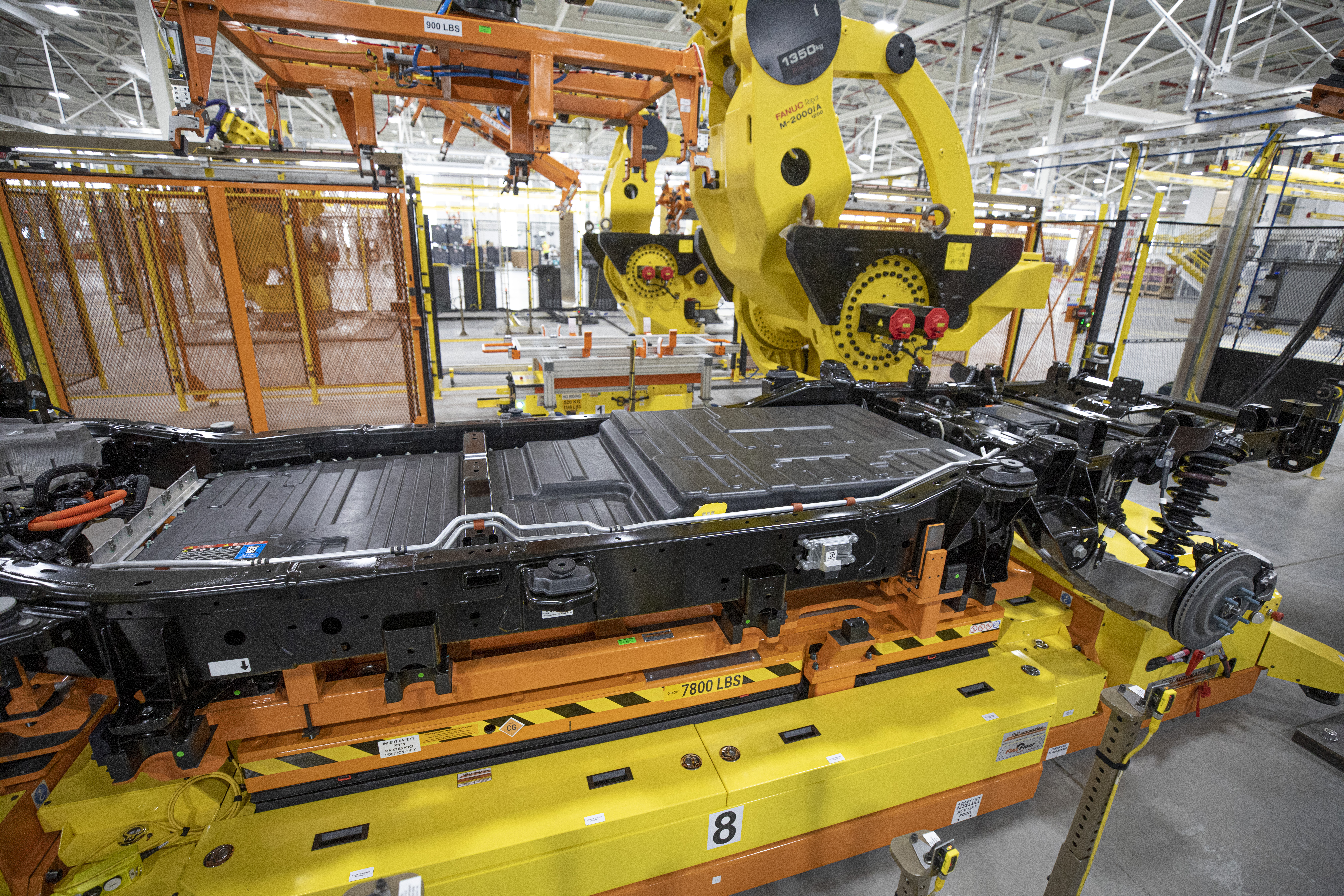Ford’s BlueOval City Begins to Take Shape

STANTON, TN—Ford Motor’s Co.’s BlueOval City campus here is the automaker’s most ambitious manufacturing initiative since the legendary Rouge complex emerged more than 100 years ago. The new 21st century facility for electric vehicle production is starting to take shape just a few miles northeast of Memphis.
The Tennessee Electric Vehicle Center is installing conveyors, robots, stamping presses and other equipment as it prepares to ramp up EV assembly lines by the end of next year.
During a presentation at the recent Automate show in Chicago, Paul Stephens, manufacturing transformation lead at Ford, provided a sneak peak at some of the state-of-the-art production technology that will be used inside the facility.
Among other things, he says the body shop will feature 100 percent automated delivery. Instead of traditional forklifts, it will use 150 autonomous mobile robots supplied by ABB Robotics. Using a cloud-based fleet management system, they will be able to handle 7,440 missions per shift.
As construction of BlueOval City progresses, the automaker is preparing to open a training facility in Brownsville, TN, later this year. The Ford Tennessee Discovery Center will be used to develop local talent.
According to Kel Kearns, plant manager, training will be “comprehensive, with online, classroom and hands-on segments designed to prepare employees to operate, maintain and troubleshoot equipment in their areas.
“The Tennessee Electric Vehicle Center will use the latest Ford manufacturing equipment, so employees will train on machine vision systems for robot guidance and quality assurance, automated pick-and-place material handling, sealer and adhesive dispensing systems and various automated mechanical joining technologies, among several other manufacturing processes,” Kearns points out.
“Community members also will be welcome to experience advanced manufacturing through virtual reality simulations at the Discovery Center,” says Kearns.
BlueOval City will be a carbon-neutral manufacturing facility designed to help minimize impact on the local environment and to protect the local community.
New technology will be used to help reduce the amount of electricity needed to manufacture vehicles, including innovations that will capture and reuse heat from the site’s utility infrastructure and geothermal energy system to provide heat for the assembly plant. That will save about 300 million cubic feet of natural gas typically needed each year to heat similarly sized vehicle assembly plants.
To further help protect air quality, Ford plans to install state-of-the art systems that will help limit emissions with no uncontrolled exhausts from painting operations. Kearns claims that the air emission limits for the Tennessee Electric Vehicle Center will be the most stringent of any U.S. assembly plant.
“We recognize the significance of farming, fishing and hunting in West Tennessee,” adds Blake Newbill, senior environmental engineer at the Tennessee Electric Vehicle Center. “And we understand that part of being a good neighbor is caring for the air, water and land so these important resources are preserved for our community.”
Newbill says the complex’s utility system will save approximately 50 million gallons of water each year by reducing evaporation from the site’s cooling towers. Plus, the zero-waste-to-landfill facility plans to reuse industrial water from across the site to preserve the use of fresh water in the plant for drinking water and other basic human needs.
“The facility aims to incorporate environmental designs, safeguards and structures to carefully control materials used in the manufacturing process and to prevent them from having contact with stormwater runoff and soil,” explains Newbill.
“The facility will not store chemicals or other materials underground, and chemical storage structures will incorporate multi-level safeguards like back-up and secondary containment systems and sealed flooring with drainage to a dedicated wastewater collection system,” adds Newbill. “[We] also intend to develop a holistic stormwater management system.”
Looking for a reprint of this article?
From high-res PDFs to custom plaques, order your copy today!






